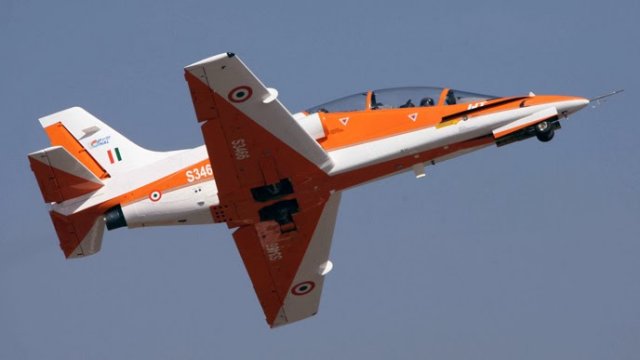Breaking news
Indian Air Force could junk transitional training for rookie fighter pilots.
| a | |||
| |
|||
World
Aviation Defense & Security News - India |
|||
| Indian Air Force could junk transitional training for rookie fighter pilots | |||
The Indian Air Force
may be forced to junk its transitional training for rookie fighter pilots
because of Hindustan Aeronautics' continuing failure to deliver its
Sitara intermediate jet trainer (IJT), which was first sanctioned in
1999 but still cannot stall-and-spin, revealed today The Time of India.
|
|||
 HAL HJT-36 Sitara jet trainer aircraft |
|||
Stall-and-spin is
one of the critical maneuvers used to transform rookie cadets into top-gun
fighter pilots in the inherently-dangerous art of combat flying. It
teaches them how to handle emergencies, hold their nerve and retrieve
their planes from a spin, as was depicted in Shashi Kapoor's film Vijeta
of the early-1980s.
Sources said the Sitara IJT has been hit by a delay of another four-to-five years after missing seven deadlines for getting initial operational clearance following the formal approval by the Cabinet Committee on Security in March 2005. The IJT will require major structural changes, including increase in airframe length as well as addition of another 305-kg to the already overweight plane, to resolve the stall-and-spin problem. "The IJT has been declared unfit for spin, even by foreign consultants like BAE Systems, after spending around Rs 4,500 crore on it," said a source. This will obviously have serious repercussions for the current three-stage training of fighter pilots undertaken by the IAF, which costs around Rs 13 crore per cadet. A rookie is taken through the paces to ensure he can handle supersonic fighters, some of which like the single-engine MiG-21s are "highly-unforgiving" to pilot errors. The first stage is now being conducted on newly-acquired Swiss propeller-driven Pilatus PC-7 basic trainer aircraft (BTA), which can undertake instrument, tactical and night-flying as well as some aerobatics. The Pilatus aircraft were an emergency purchase after IAF training schedule went haywire following the grounding of the entire fleet of the 114 old piston-engine HPT-32 aircraft -- which had long served as the BTA -- after a crash killed the pilot in August 2009. The intermediate stage is currently undertaken on the equally obsolete Kiran aircraft, whose operational life has been repeatedly extended due to the absence of the Sitara IJT. But the Kirans, in gradually reducing numbers, can be used till 2017-18 at the most. The final stage, where the pilots are taught the intricacies of combat fighter flying including air-to-ground bombing, is conducted on British Hawk advanced jet trainers (AJTs). Earlier, the cadets were forced to graduate directly to the highly-demanding MiG-21s after flying sub-sonic aircraft like HPT-32 and Kirans. The IAF may now have to restrict its fighter training to two stages, first on Pilatus and then the Hawk AJTs. Incidentally, almost 40% of the 1,100 crashes recorded by IAF since 1970 have been attributed to ``human error (air crew)''. "Technical defects" is the other equally big reason for the crashes. |
|||



















